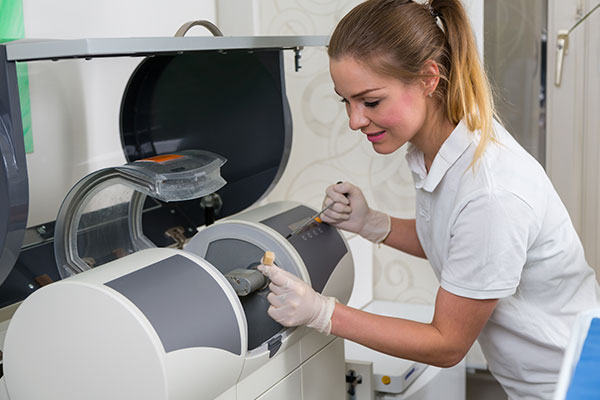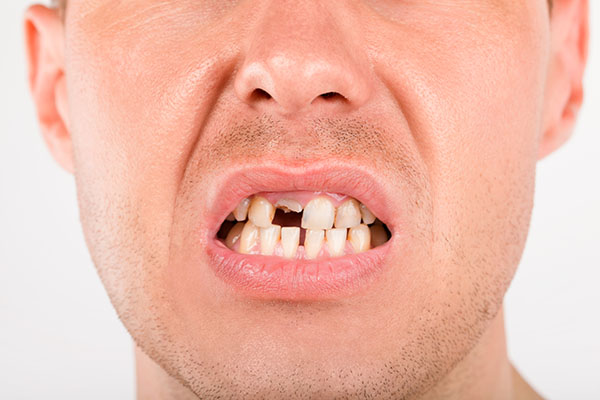4 FAQs about CEREC® Crowns

A crown is often a necessary dental treatment for a tooth that has decayed or been heavily damaged over time, and knowing about CEREC® crowns can help determine whether you want to branch out from traditional crown options. Crowns are caps that can be placed and sealed over cracked teeth, shaved-down teeth after root canals, dental implants, discolored or yellowed teeth. They can also secure dental bridges. They are one of the most common forms of treatment in dental cosmetics.
Top questions about these crowns
CEREC® is short for Chairside Economical Restoration of Esthetic Ceramics. These crowns are carved from ceramic blocks and shaded by the dentist to match each patient’s teeth color. These answers to common questions about CEREC® crowns can help establish how they may restore damaged teeth.
1. How is a CEREC® crown made?
The dentist begins by making an impression of the patient’s mouth and teeth with a digital scan. This is done quickly and efficiently in the office. The impression is transferred to the computer where the dentist can review it for any errors. The ceramic crown is then carved in the dentist’s office based on the digital impression, and the final crown can be immediately placed over the tooth. This all occurs during a single office visit.
2. How do they compare to traditional crowns?
Traditional crowns must be made outside of the dentist’s office in a lab. The dentist takes a mold of the patient’s teeth to send to the lab so the crown can be constructed. The final product is sent back to the dentist up to several weeks later, and only then can an appointment be made to put in the final crown. Until then, the patient must use a temporary crown.
CEREC® crowns can be made quickly on site, require only one appointment and use digital impressions instead of putty. There is no need for a temporary crown.
3. Are CEREC® crowns accurate?
These crowns are usually highly accurate since they are made from digital measurements of a patient’s teeth. This can avoid any variables that may make a traditional impression less accurate, such as extra saliva in the mouth or a tray that does not fit correctly.
4. How do you take care of the crown afterward?
These crowns can be treated the same as traditional crowns once they have been adhered over the damaged tooth. There may be some sensitivity around the tooth in the days following its placement, but this should go away. A patient should maintain general oral hygiene, including brushing with toothpaste at least twice a day and flossing once per day. Avoid chewing particularly sticky foods, as they could loosen the adhesion and pull the crown out of place. If any problems arise, consult with a dentist.
Conclusion
CEREC® crowns can have certain advantages over traditional crowns, but that does not necessarily make them a better option. Every case must be treated individually, and a dentist can advise each patient on dental cosmetic options. Understanding that different kinds of crowns exist can expand patients' choices when it comes to fixing problem teeth.
Are you considering CEREC crowns in the Forest Hills area? Get more information at https://metrosmiles.com.
Check out what others are saying about our services on Yelp: Read our Yelp reviews.
Recent Posts
Dental restorations are used to repair or strengthen damaged teeth and to replace missing teeth. The damage may be the result of routine decay, extensive decay, fractures, weak gums, and many other dental issues. Dentists recommend restorations based on the tooth, its location, the source of trouble, the health of surrounding teeth, tooth color, patient…
A dental crown can restore a damaged, worn, or weakened tooth. This restoration can bring back your healthy smile and stable dental function. Knowing the benefits of dental caps can motivate you to set an appointment soon. Here are the benefits of a dental crown that you must consider.Losing a tooth can be annoying, especially…
Dental restorations help individuals regain oral functions like chewing and achieve better smiles. Although dentists' skills and experience are necessary to achieve favorable results, material choices contribute significantly to patient satisfaction.Dentists consider the location of teeth in the mouth and patients' input when selecting materials for dental restorations.Dentists aim to restore the function and appearance…
A patient who is missing a single tooth may wonder if dental restorations are worthwhile. There are several reasons that a missing tooth should not be left as an empty space. Here are a few potential issues that can arise from having a missing tooth and why restorations should be seen as required rather than…


